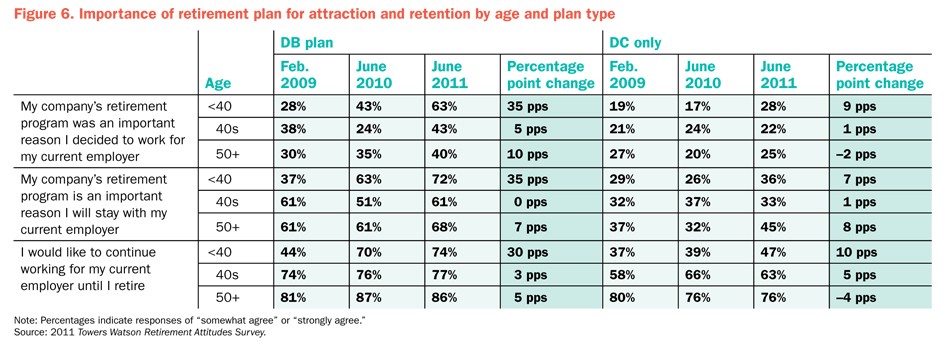6 Critical Trends for Retirement Plans in 2012
Post on: 16 Март, 2015 No Comment

Regulatory changes will dominate the industry this year
More On Legal & Compliance
from The Advisor’s Professional Library
- Trading Practices and Errors When SEC-registered investment advisors conduct annual audits of firm policies and procedures, they should pay close attention to trading practices. Though usually not required to, state-registered advisors should look at their trading practices and revise policies that do not fully protect clients. U.S. Securities and Exchange Commission Information This information sheet contains general information about certain provisions of the Investment Advisers Act of 1940 and selected rules under the Adviser’s Act. It also provides information about the resources available from the SEC to help advisors understand and comply with these laws and rules.
Lincoln Trust Co. on Wednesday released a report on six megatrends that would affect the retirement plan industry in 2012. These trends focus largely on upcoming regulatory changes, but also include wider industry changes.
In this volatile market, we are tracking both industry and Department of Labor regulatory trends to help retirement plan advisors, plan sponsors and participants understand the changes that will unfold over the next 12 months, said Tom Gonnella, senior vice president of corporate development for Lincoln Trust. With new regulations and greater awareness of the impact that fees have on the long-term performance of 401(k)s, this is a pivotal year for the industry. But more needs to be done to help plan sponsors and participants be successful in planning for their retirement future.
The six megatrends Lincoln Trust sees in 2012:
1) New 401(k) Fee Disclosure Rules by DOL
New Department of Labor (DOL) regulations go into effect April 1, 2012, and will shake up the industry, as plan sponsors and participants for the first time see the true cost of their retirement investments.
[Update: On Feb. 2, the DOL released its long-awaited final rule on 401(k) fee disclosures and extended the compliance deadline to July 1.]
2) C Suite Sticker Shock
Company executives, who typically have the largest participant balances and therefore pay the most significant expenses in their plan, will likely be most affected by new fee disclosure rules, according to Lincoln, resulting in a wave of 401(k) reevaluations. The firm predicts companies will begin looking at changing plan administrators, lowering investment expenses, or reallocating overall expenses across the plan structure.
3) A Refined Fiduciary Standard

The Dodd-Frank Act signed in July 2010 accelerated the discussion about the fiduciary standard, and along that line the DOL will refine and clarify the issue in 2012. Lincoln foresees some advisors and administrators shifting strategies to adopt open architecture ERISA 3(38) plans or exiting the business altogether.
The Department of Labor told AdvisorOne on Jan. 9 that it planned to release its reproposed rule revising the definition of fiduciary during the first half of 2012, calling the effort one of the agencys most important regulatory projects.
4) Models vs. Target-Date Funds
The potential for increased market volatility in 2012 will continue to push plans out of one size fits all target-date funds and into customized asset allocation models that more accurately reflect plan and participant needs, according to Lincoln.
Target-date funds had a shaky year in 2011. with the average fund four years ahead of its retirement target date declining 0.4%, according to SmartMoney, compared with a 2% gain in the S&P 500 and an 8% gain in the Barclays Capital Aggregate Bond Index
5) The Rise of 401(k) Evaluation Services
Fee disclosure, as structured by the DOL, will raise more questions than it answers, Lincoln suggests. As such, plan sponsors will look for services that help them evaluate the true cost of 401(k) offerings. Plan consulting firms, TPAs and advisors will see an increase in demand for their services.
6) A Call for Investment Expense Transparency
While the new 401(k) regulations are a step in the right direction, Lincoln admits, they fall short of full fee disclosure. Notably, the disclosure of investment costs actually incurred by participantstypically the single largest plan expenseis not required by DOL regulation, the firm writes. Instead, the DOL only requires the disclosure of expense ratios and the amount per $1,000 that it would cost participants to be invested in the fund, thus requiring the participant to perform the calculations required to determine their total investment expense. Once sponsors and participants get a taste of disclosure they will want moreand regulators will be pressed to provide it.














